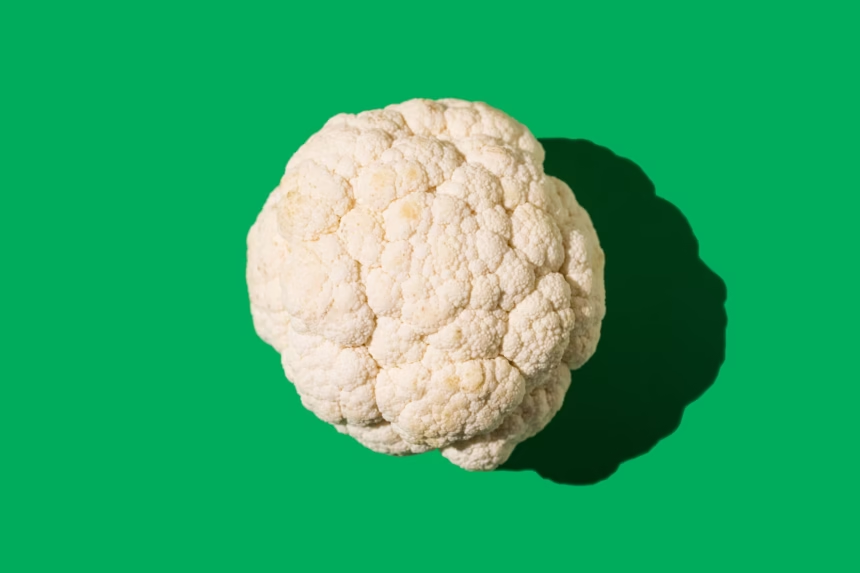
Cauliflower (Brassica oleracea) has been shown to have anti-aging, anti-cancer, and anti-inflammatory benefits. It’s a cruciferous vegetable that can be good for you since it’s low in carbohydrates and calories. One cup of raw cauliflower has several nutrients, only 30 calories, and 5 grams of carbohydrates.
One cup of raw cauliflower has 2.14 grams of fiber, which can help you manage your weight. Fiber adds bulk to your meals and helps you feel full for long periods. The same serving of cauliflower also provides about 3.5 ounces of water, which helps promote fullness.
Bioactive compounds in cauliflower have been shown to reduce inflammation. Cauliflower is also a source of antioxidants, including types that protect against oxidative stress.
Oxidative stress occurs if there’s an imbalance between free radicals and antioxidants. Free radicals are unstable atoms that can cause cell damage. The result is widespread inflammation, which might lead to premature aging and disease.
One cup of raw cauliflower provides over 75% of the Daily Value (DV) for vitamin C. Your body requires vitamin C to repair DNA and produce collagen, red blood cells, and serotonin. Vitamin C also supports immune function.
Cauliflower is also rich in vitamin K and choline, with 20% and 10% of the DV per cup. Vitamin K supports bone health and can lower your fracture risk. Choline plays a role in sleep, memory, learning, and muscle movement.
Cauliflower provides small amounts of other essential nutrients, including B vitamins, magnesium, manganese, phosphorus, and potassium.
Cauliflower helps reduce the risk of heart disease and cancer, the two leading causes of death in the United States. One review found eating cruciferous vegetables reduces the risk of cancer, heart disease, and death from any cause.
Cauliflower contains natural substances that protect the areas of blood vessels most prone to inflammation. Long-term inflammation can increase heart disease risk. Some evidence suggests that these substances might also prevent colorectal cancer from growing and spreading.
Experts advise eating 25 grams of fiber per day for women and 38 grams for men, but most people do not eat enough.
Eating cauliflower and other vegetables can increase your fiber intake. The fiber in cauliflower feeds helpful gut bacteria that reduce inflammation and promote bowel regularity.
Research has shown that sulforaphane may influence your genes in ways that slow the biochemical process of aging.
Sulforaphane is a natural substance in cauliflower and other cruciferous vegetables. It neutralizes toxins, reduces inflammation, and protects DNA. One study found that sulforaphane might also protect the brain and slow age-related cognitive decline.
You might opt for cauliflower as an alternative to white rice if you follow a low-carbohydrate diet like the keto diet. Eating cauliflower in place of white rice can reduce calories and carbohydrates without the need to sacrifice volume.
A three-quarter cup portion of riced cauliflower contains about 15 calories and 3 grams of carbohydrates. The same serving of cooked white rice provides about 242 calories and 53.2 g of carbohydrates.
Detoxification is your body’s natural process of getting rid of potentially harmful chemicals. Eating cauliflower and other cruciferous vegetables may support this process.
Cauliflower contains enzymes that aid in detoxification. These enzymes act like internal garbage collectors: They scour your body for toxins and waste products, bind to them, and then escort them out of your body.
One cup of raw cauliflower provides the following nutrients:
- Calories: 26.8
- Fat: 0.3 grams (g), or 0.4% of the Daily Value (DV)
- Sodium: 32.1 milligrams (mg), or 1.4% of the DV
- Carbohydrates: 5.3 g, or 1.9% of the DV
- Fiber: 2.1 g, or 7.5% of the DV
- Added sugars: 0 g, or 0% of the DV
- Protein: 2.1 g, or 4.2% of the DV
Cauliflower is a high-FODMAP food. FODMAPs are fermentable oligosaccharides, disaccharides, monosaccharides, and polyols. Your gut poorly absorbs these short-chain carbohydrates. It rapidly ferments FODMAPs, which triggers gas production.
It’s not unusual to have some gut issues if you boost your cauliflower intake and have a sensitive digestive system. High-FODMAP foods can worsen irritable bowel syndrome (IBS), which affects the large intestine. They may trigger abdominal pain, bloating, diarrhea, and gas in people with IBS.
You can enjoy cauliflower on its own or mixed into different recipes. Here are some ways to include cauliflower in your diet:
- Add it to oatmeal and smoothies for an additional boost of fiber
- Grill or steam cauliflower and then drizzle it with a bit of dairy-free pesto, seasoned tahini, or extra virgin olive oil with garlic and herbs
- Incorporate it into dessert recipes, such as brownies, cake, pudding, and cheesecake
- Oven-roast cauliflower with avocado oil or olive oil and sprinkle it with a mix of black pepper, sea salt, and turmeric
- Replace white rice with riced cauliflower, or enjoy cauliflower mash instead of mashed potatoes
Most people are familiar with white cauliflower, but this vegetable comes in several additional colors. You might find purple, orange, and green cauliflower at your local grocery store or farmers’ market. These colorful varieties have more antioxidants than white cauliflower.














